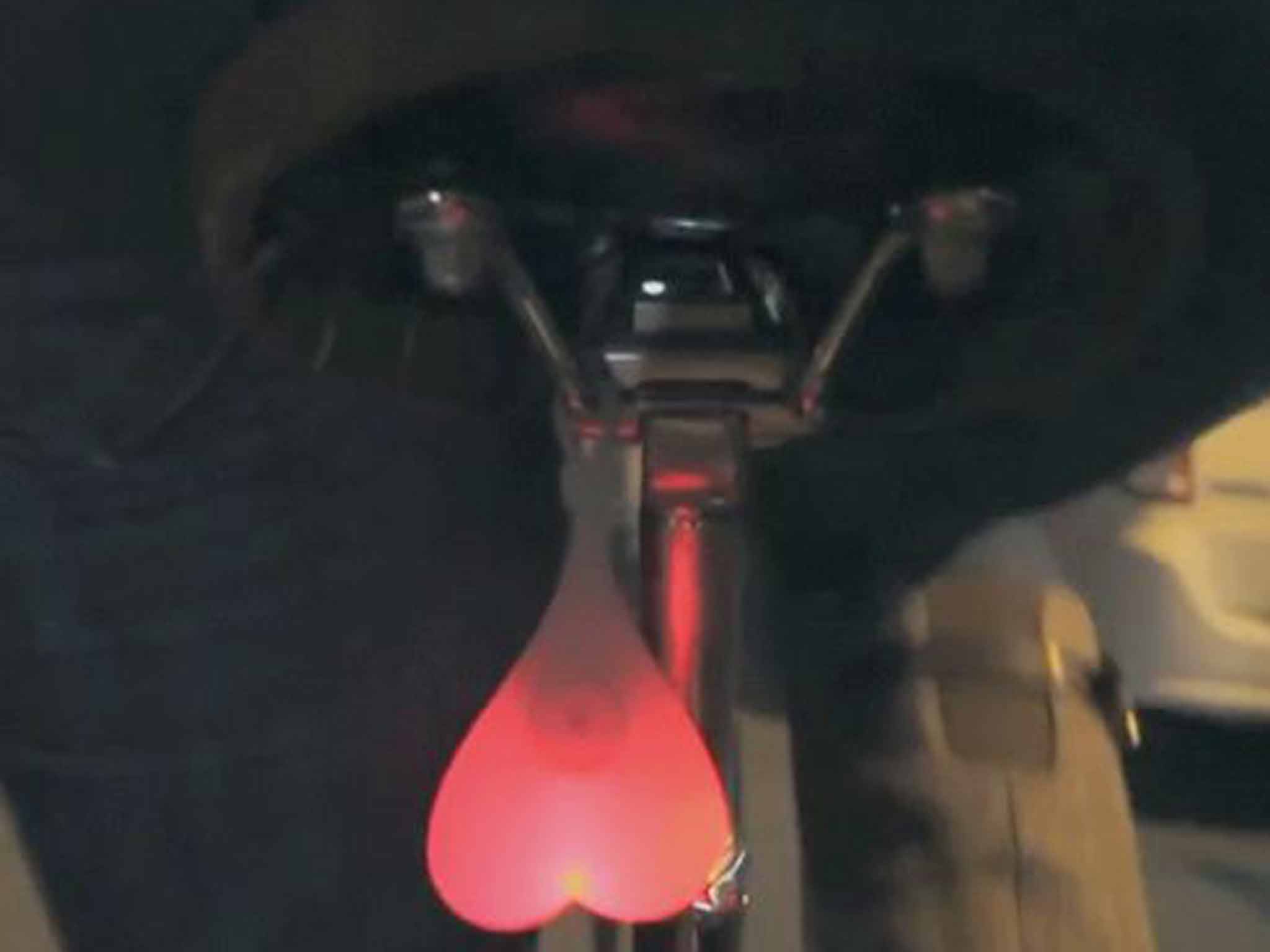Bike Balls: Will a bobbing, luminescent, scrotum-like device improve the lot of wobbly cyclists?
Travelling on two wheels has just got a little safer – or at least, a lot funnier – with the introduction of a new LED device. Simon Usborne won't play ball.

You may or may not be aware of Moore's Law, the ingenious forecast by Gordon Moore, the co-founder of Intel. In 1965, he observed that the number of electronic components that could be squeezed on to a circuit board had doubled every year, and predicted that it would continue to do so. In other words, computer stuff would get twice as small and smart every 12 months.
A decade later, Moore, now 87, said that the doubling would happen every two years and, whether by way of his genius or a self-fulfilling prophecy, he turned out to be right. His law went on to guide and reflect the rapid miniaturisation and technological advances in all the devices that keep the modern world turning, including the phones in our pockets.
Arguably, a by-product of Moore's Law should be considered separately. It would describe the way that, in the hands of those with more basic ambitions, the same rapid advances have enabled the invention of a load of dumb stuff we never we knew we needed. If there is demand for this law to be recognised, and for it to be named, I would suggest: the Bike Balls Law.
Bike Balls is a single, LED unit enclosed in a silicon housing, designed to look – and dangle – like the human scrotum. The light the device emits is red, and its strap is designed to attach to the rails under the rear of a bicycle saddle, roughly where a male cyclist's own testicles would hang, given the freedom and a very warm day. Just turn them on with a gentle squeeze.
The Canadian-designed and “scrotally awesome” rear light, available from this week at Firebox, the British online purveyor of quirky useless devices and above-average puns, is possible thanks to two advances – and the humour of its inventors. The first is Kickstarter, the crowdfunding site through which would-be buyers can finance inventions directly. (It took just three days for Bike Balls to attract its initial target of a little over £6,000 last year – and it went on to reach almost £50,000). The second is bike-light design itself, which has evolved at a Moore-ish rate since man first took to two wheels after dark.
Oil lamps were all we had until the first bike boom of the 1890s. By then, as bike historian Carlton Reid recounts in his book Roads Were Not Built for Cars, a paraffin dealer called Joseph Lucas had developed his hi-tech King of the Road lamp. A chunky affair that attached to the front hub, next to the middle of the wheel, it used acetylene – a gas you wouldn't want anywhere near your balls – to knock out a fiercely bright white light.
In the way that so much of the car industry rolled out of that cycling boom, Lucas went on to greater success by making lamps for cars. But by the time the company got back into bike lights during the current cycling boom, things had changed. Long gone were the chunky halogen bricks with rusting batteries that lit the way until the LED revolution. Now lights could be as small as you liked and USB rechargable (mine are plugged into my computer as I type).
You can put lights on your spokes to create a Tron-like circle as you ride. Or with Blaze, the device now making its way onto all the “Boris” public hire bikes in London, you can throw out not only light but the image of a cyclist on to the road metres ahead, warning cars of your approach. And now – if you really want to – you can hang a pair of bright red balls off your saddle. If nothing else, they'll raise a titter where, between crashes and recriminations, a bit of humour wouldn't go amiss. Just don't expect them to halve in size two years from now.
Join our commenting forum
Join thought-provoking conversations, follow other Independent readers and see their replies
Comments
Bookmark popover
Removed from bookmarks